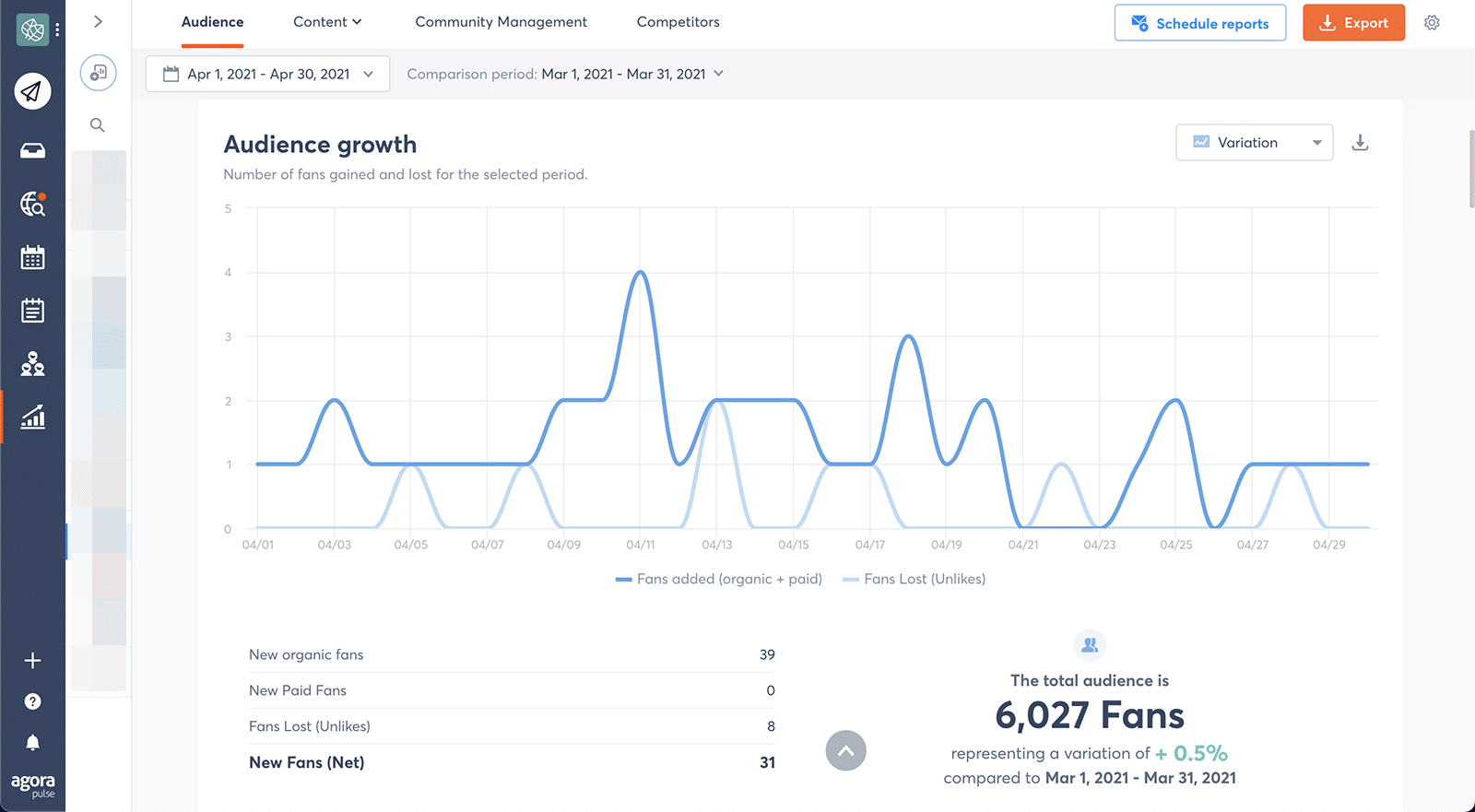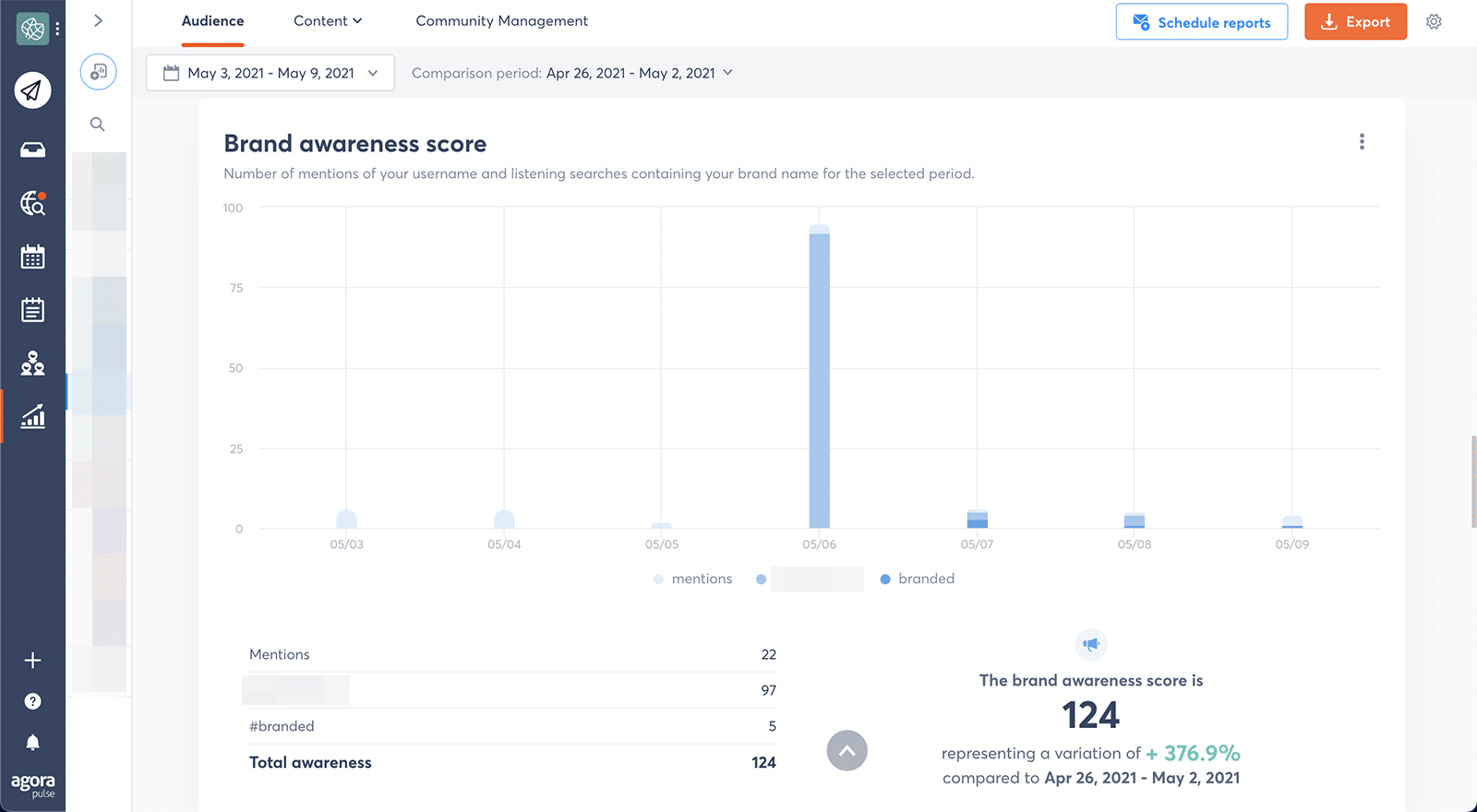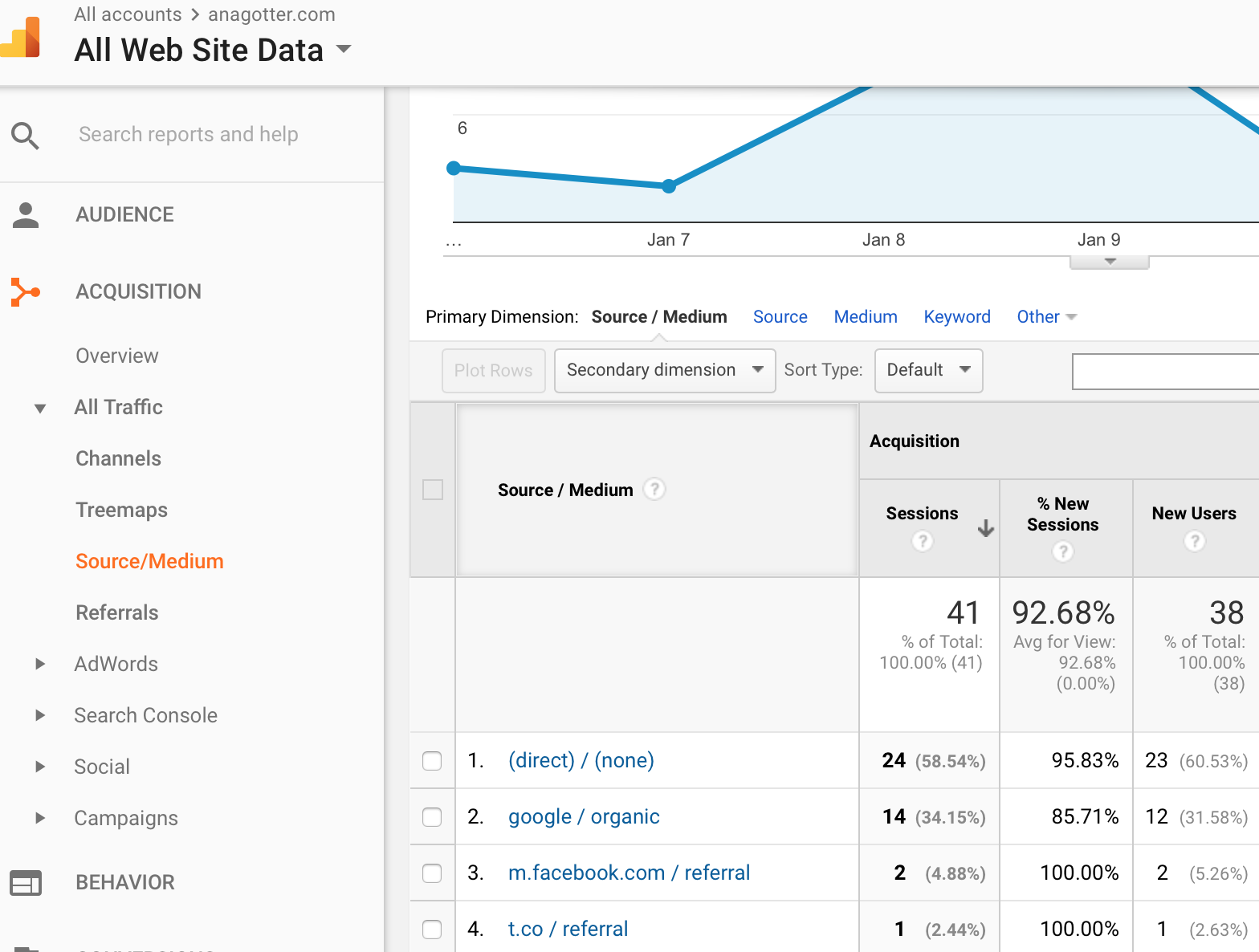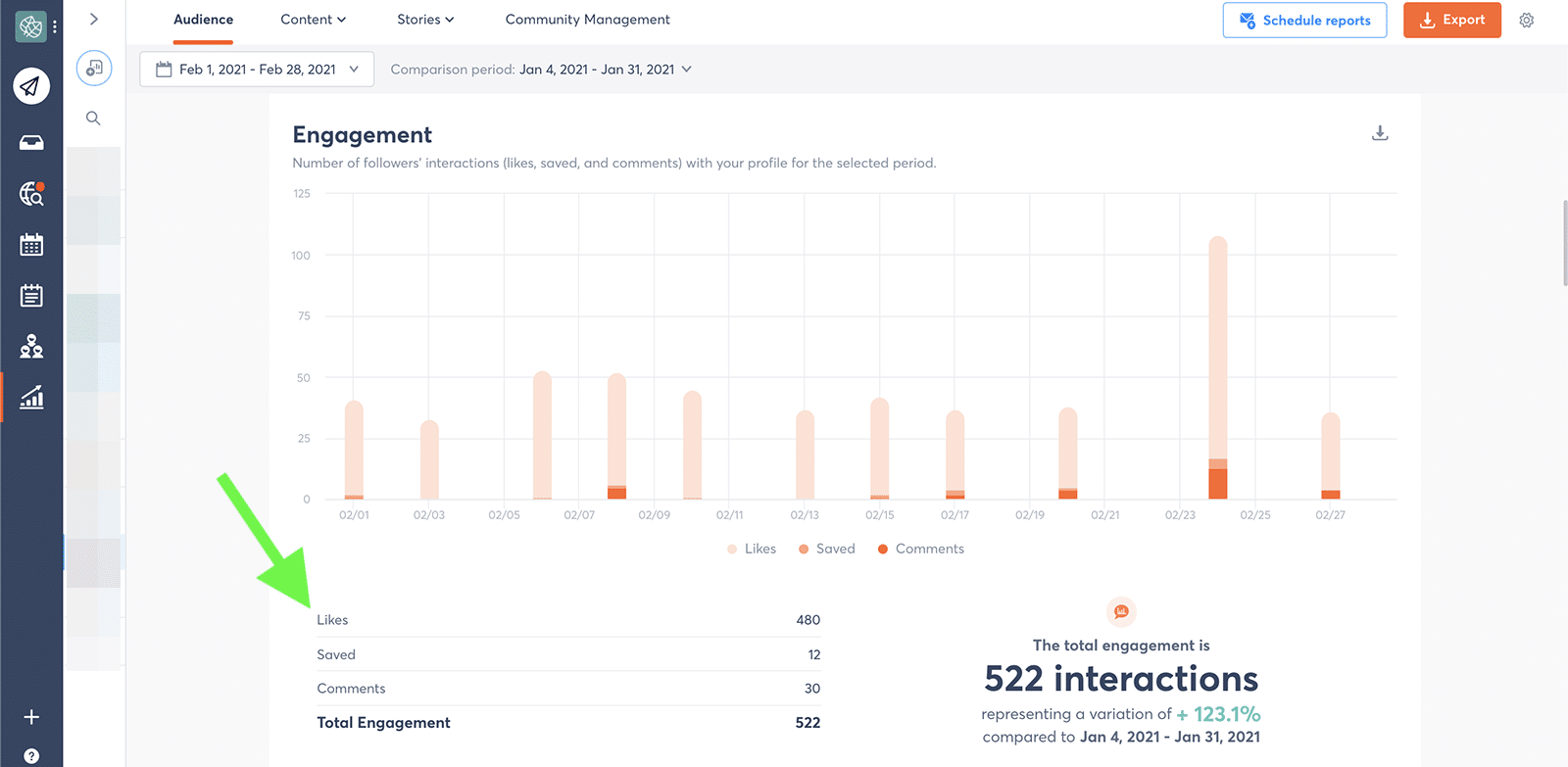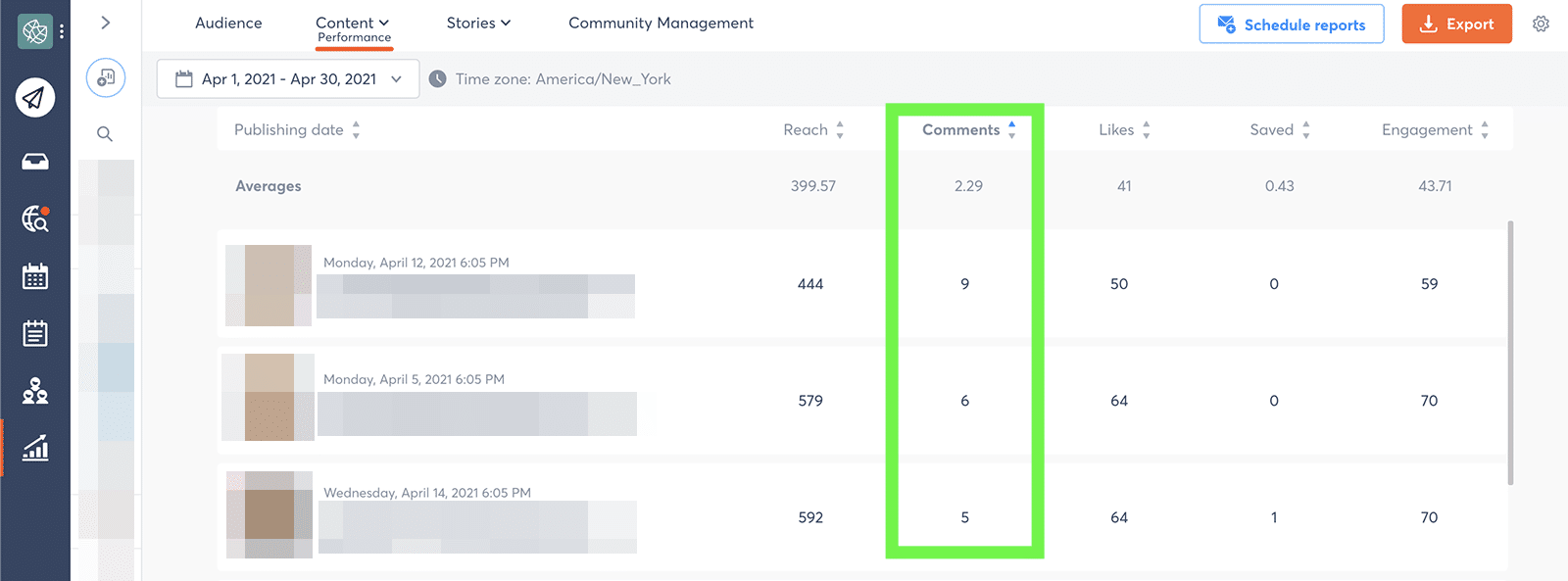Social media audits allow you to evaluate where you are in progress in your social media marketing, and they help you to see where- and how- you can make improvements.
While you should consistently be evaluating progress and social media metrics regularly throughout the year, I also recommend a full in-depth social media audit at least once a year.
In this post, I’ll take you step-by-step through the process I use to help my clients audit their social media and develop new strategies to get them where they want to go.
Step 1. Invest in Scheduling and Reporting Software
Traditionally, social media audits can be a huge headache. And when I say huge, I mean, ice-pick-migraine-level pain. You have to dig into each social media platform individually, download the social media metrics, and then try to assemble all the data into one report even manually.
Social media reporting software like Agorapulse (which I use for all of my clients) makes the process so much simpler and a little more accurate.
It’s not prone to human errors, and it will literally save you hours of time for every social media audit in addition to speeding up your metrics evaluations and marketing analytics throughout the year.
The other obvious benefit is being able to create, schedule, queue and directly publish your content across each platform, even Instagram. (Seriously, Agorapulse even sends you emails telling you the best times to post and what type of content is most likely to perform best.)
Social media audit tip
Set up your Agorapulse before you get started then give it a bit of time to pull data from your different social media profiles. Once you do, you can begin the actual social media audit.
Related Post: How to Create Power Reports That Shine
Step 2. Look at Your Current Social Media Metrics
The first step of the actual social media audit itself will be to pull up social media reports that detail your performance on every social media channel you’re using. Agorapulse makes this easy, providing us with performance metrics overall, and on specific content.
The global reporting will tell you how many followers you have on each platform, how much your follower count has increased or decreased in a set time frame, engagement, estimated brand awareness, and more.
Social media audit tip
For every single platform, you should focus on:
- Engagement rates. This matters even more than engagement numbers alone, in many cases, as it shows how relevant your content is to your followers.
- Growth in follower patterns. If you’re on the decline or increasing, you want to know why so you can adjust your strategies accordingly.
- Posting frequency. Sometimes, it feels like we’re posting a lot more than we are. Seeing a smaller number for total posts can remind us of that.
- Your awareness estimates. Agorapulse calculates this partially by showing you how many mentions your tweets are getting, helping you extend your reach. If you aren’t getting your name and content talked about on different platforms, your content may not be powerful enough.
- Community management. Find out how well you’re doing when engaging with your community. If you have fifteen replies and you only responded once, that’s something that you’ll want to re-evaluate.
All those social media metrics are important. They allow you to examine your community-building efforts from all angles. Even if you post great content, for example, but fail to reply to your messages and comments, you could be dropping the ball.
Step 3. Review Google Analytics
At this stage, I also recommend taking a close look at your Google Analytics. Check out which platforms are sending you the most organic and paid traffic. You can do this by clicking on “Acquisition,” then “All Traffic,” and then “Sources/Medium.”
In the example above from my own site, you’ll see that Facebook is the only social channel that sent me traffic recently.
I’ve noticed that after I have a post released, I typically get 5-10 site visits from Twitter, and every time I make an announcement about new services on my personal Facebook, I generate about three new leads.
Step 4. Examine Your Social Media Content
Agorapulse’s content reporting will show you each piece of content you’ve posted in a set time frame, along with the exact performance metrics it received. With this information, you can see what types of content perform better than others.
You may notice that some get more shares, but others get more replies. Take note of that, because while shares are good for both brand awareness and community building, replies can help form strong relationships more immediately.
Under the global reporting tab, start by taking a look at the types of content you’re posting (which shows whether you included text, links, and images or videos).
You should also look at the hashtags that earned you the most interactions on both Instagram and Twitter, because these are crucial for reach-building and can give you an idea of what content your audience likes.
Then, under the content reporting for each platform, take a look at your individual posts and see what’s getting the most engagement.
How to Craft a Social Media Content Strategy
See what types of content get more likes, retweets/shares, and comments and take note of that. There’s a decent chance that this will be different on each platform.
Social media audit tip
During this stage, look for trends and patterns to see what factors make certain posts resonate more with your audience. These may include:
- Whether or not a visual element is included
- If there’s a CTA for engagement, or you ask the audience a question
- How long the content is
- The topic of the post
- If it contains an outbound link
Step 5. Reflect on Your Past Goals
You’ve got the metrics, so now it’s time to take a look at how the metrics measured up to your actual goals. Did you get the results you wanted, both on and off platform?
You should do this exercise for each individual platform, and then evaluate them against each other.
If not, it’s time to figure out why. Maybe your engagement rates sank because your post isn’t favored under the current algorithm).
Maybe there was just a platform algorithm change that hit this month, and you’re already seeing engagement drop off. None of that is on you.
Still, it’s important to look at why you are or aren’t progressing the way you want to be. This will be crucial to helping you form new strategies and setting new goals, which brings us to our next and final step.
Step 6. Use the Data to Set New SMART Goals
You’ve got all the data. You know where you stand, and you know how you measured up to the goals that you set last year.
Now, based on the knowledge at hand, it’s time to set new SMART goals and develop strategies surrounding them.
SMART goals are goals that are specific, measurable, agreed-upon, realistic, and time-based.
Are Your SMART Goals Realistic?
So instead of saying, “I want more followers,” you could say “I grew my follower count by 200 last year, and we’re at 1000 now. I want to increase my followers to 1,400 on Instagram and Twitter by the end of the year.”
Social media audit tip
Knowing what you now know about your business, social media, and your community, you can develop new strategies to help you do that. Maybe you’ve focused in on the more beneficial hashtags, or you’ve realized that video content gets a much better reach and helps you grow that way.
In this case, you’d post more frequently, prioritize video content, and make sure to use the hashtags with the best reach on every single post.
This will all be most effective when you connect social media goals to direct business goals. Getting more followers, for example, means that more people will see your posts about upcoming events your business is hosting.
Or, maybe you notice that you have a steady 3% CTR on promotional posts, even with growth, so more followers means more sales.
Social Media Audits: What We Learned
Social media audits can take up a chunk of time, but they’re worthwhile. Utilize tools like Agorapulse, and coordinate the information with site analytics tools like Google Analytics.
This will help you form a clear picture of how your paid and organic social campaigns are impacting your business. Trust me, you’ll be glad you did.
Get started on saving time and energy on your own social media management! Check out our free trial of Agorapulse to help you schedule, track, and measure all your social media efforts.



